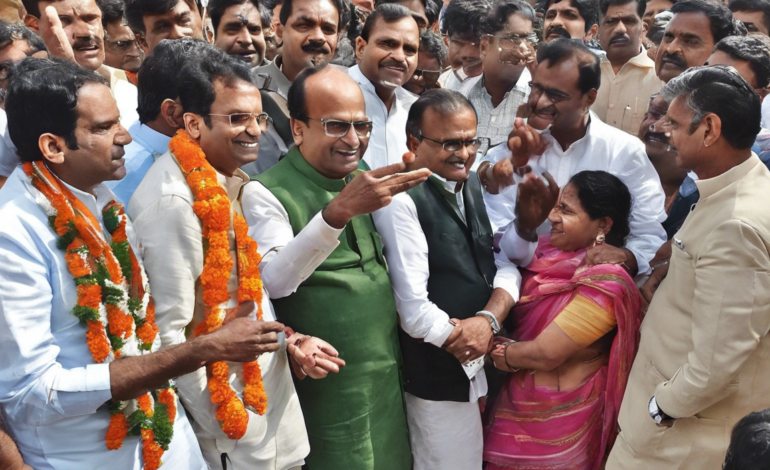Decoding the Madhya Pradesh Election Results

With the recent conclusion of the Madhya Pradesh Assembly elections, the political landscape in the central Indian state has witnessed significant upheaval. The poll results have far-reaching implications for the state as well as national politics. In this in-depth analysis, we will delve into the outcomes of the Madhya Pradesh election, dissect the factors that influenced the results, and explore the repercussions of the verdict for various stakeholders.
Setting the Stage: Madhya Pradesh’s Political Landscape
Madhya Pradesh, with its substantial rural population and diverse demographics, has always been a key battleground state in Indian politics. The state’s political history has predominantly been dominated by the two major national parties, the Indian National Congress and the Bharatiya Janata Party (BJP). In the 2018 Assembly election, the Congress, under the leadership of Kamal Nath, managed to dislodge the BJP government led by Shivraj Singh Chouhan, who had been at the helm for three consecutive terms.
Factors Influencing the Election Results
-
Anti-Incumbency: After 15 years of BJP rule, there was a palpable anti-incumbency sentiment against the Shivraj Singh Chouhan government. Issues like agrarian distress, unemployment, and allegations of corruption eroded the popularity of the ruling party.
-
Farmer Unrest: The agrarian crisis in Madhya Pradesh, characterized by farmer suicides and lack of adequate support mechanisms, played a crucial role in shaping voter sentiment. The Congress promised loan waivers and better MSPs for crops, resonating with the farming community.
-
Social Engineering: Both parties strategically crafted their campaigns to appeal to different social groups. The Congress focused on consolidating support from OBCs, Dalits, and tribals, while the BJP relied on its traditional urban and upper-caste vote bank.
-
Leadership Dynamics: The contrasting leadership styles of Kamal Nath (Congress) and Shivraj Singh Chouhan (BJP) also influenced voter choices. While Kamal Nath projected a development-oriented image, Chouhan’s tenure was critiqued for its alleged administrative failures.
The Verdict: Congress’s Narrow Victory and BJP’s Resilience
The election results in Madhya Pradesh showcased a nail-biting finish, with the Congress securing a narrow majority over the BJP. The Congress managed to win 114 seats in the 230-member Assembly, while the BJP closely trailed with 109 seats. The outcomes in certain constituencies were decided by slender margins, underscoring the closely contested nature of the elections.
Despite facing defeat, the BJP’s performance highlighted its resilience and continued popularity in the state. The party’s ability to retain a significant vote share and challenge the Congress’s supremacy in several regions signaled its enduring appeal among certain voter segments.
Implications of the Verdict
-
Policy Shifts: The change in government in Madhya Pradesh is likely to usher in policy shifts, particularly in the areas of agriculture, employment, and social welfare. The Congress’s manifesto commitments, including farm loan waivers and job creation schemes, will be closely watched for implementation.
-
National Ramifications: The Congress’s success in Madhya Pradesh has bolstered the party’s morale at the national level. It has also served as a template for opposition parties to form alliances and mount a formidable challenge against the BJP in the upcoming general elections.
-
Administrative Challenges: The transition of power from the BJP to the Congress poses administrative challenges, including governance continuity, bureaucratic realignment, and policy execution. How the new government navigates these hurdles will be crucial for its credibility and performance.
Frequently Asked Questions (FAQs)
- What were the key issues that shaped the Madhya Pradesh Assembly election results?
-
The major issues included anti-incumbency against the BJP government, farmer distress, social dynamics, and leadership appeal.
-
How did the Congress manage to secure a majority in the Assembly despite the close contest?
-
The Congress strategically positioned itself on key issues like farmer welfare, unemployment, and social inclusion, resonating with a significant voter base.
-
What are the immediate challenges for the new Congress government in Madhya Pradesh?
-
The challenges include fulfilling manifesto promises, addressing governance issues, managing coalition dynamics, and ensuring effective administration.
-
What role did regional parties and independents play in the election results?
-
Regional parties and independents influenced outcomes in certain constituencies, leading to a fragmented mandate in some regions.
-
How is the Madhya Pradesh verdict likely to impact national politics?
- The election results have reinvigorated the opposition parties, setting the stage for a more competitive political landscape in the run-up to the general elections.
In conclusion, the Madhya Pradesh Assembly elections have not only reshaped the state’s political dynamics but also set the stage for broader ramifications in the national arena. The closely contested battle, the policy implications, and the leadership narratives emerging from this electoral exercise will continue to reverberate in the months to come, offering valuable insights into the evolving contours of Indian democracy.



